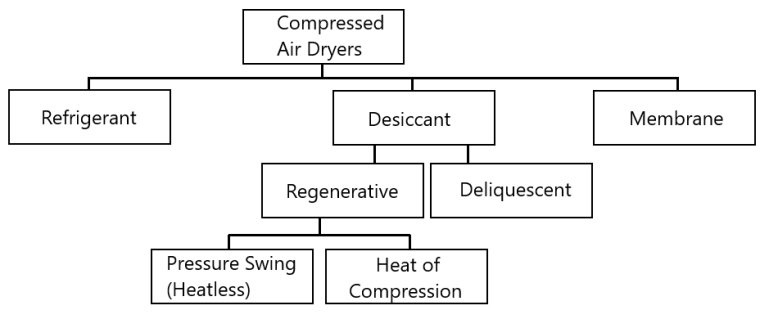Absolutely Nothing….. err ALOT! They are really good for a lot! Specifically removing moisture/condensate from compressed air.
In almost every operation, clean, dry compressed air will result in lower operating costs. The purpose of compressed air dryers is to overcome the dew point of your compressed air by removing water from it. Compressed air can contain humidity, and in the right environments it can reach the dew point temperature and condense into a damaging liquid. This liquid can be problematic, as it can contaminate your products or equipment, causing frozen pipes, and possibly leading to corrosion and other issues.
Now that we know how important they are how do you know which one is right for you?

• Refrigerant Dryer – the most commonly used type, the air is cooled in an air-to-refrigerant heat exchanger. (Here is a great blog deep diving on Refrigerant Dryers)
• Regenerative-Desiccant Type – use a porous desiccant that adsorbs (adsorb means the moisture adheres to the desiccant, the desiccant does not change, and the moisture can then be driven off during a regeneration process). (Here is a great blog deep diving on Desiccant Dryers)
• Deliquescent Type – use a hygroscopic desiccant medium that absorbs (as opposed to adsorbs) moisture. The desiccant is dissolved into the liquid that is drawn out. Desiccant is used up and needs to be replaced periodically. (Here is a great blog deep diving on Deliquescent Dryers)
• Membrane Type– use special membranes that allow the water vapor to pass through faster than the dry air, reducing the amount of water vapor in the air stream. (Here is a great blog deep diving on Membrane Dryers)
The selection of an air dryer is done best by the professional who knows or learns the particular end uses, the amount of moisture which each use can tolerate and the amount of moisture which needs to be removed to achieve this level. Air, which may be considered dry for one application, may not be dry enough for another. Dryness is relative. Even the desert has moisture. There is always some moisture present in a compressed air system regardless of the degree of drying.
For compressed air, the best way to specify dryness is to cite a desired pressure dew point. Different types of dryers, therefore, are available with varying degrees of pressure dew point performance. To specify dew point lower than required for an application is not good engineering practice. (Naming a pressure dew point is how to state the degree of dryness wanted.) It may result in more costly equipment and greater operating expense.
If you have questions about compressed air systems and dryers or any of our 15 different Intelligent Compressed Air® Product lines, feel free to contact EXAIR, and I or any of our Application Engineers can help you determine the best solution.
Jordan Shouse
Application Engineer
Send me an Email
Find us on the Web
Like us on Facebook
Twitter: @EXAIR_JS


